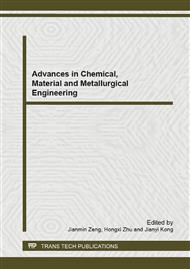p.2358
p.2362
p.2366
p.2373
p.2378
p.2383
p.2388
p.2392
p.2397
The Influence of AST Doping on the Dielectric Properties of MgTiO3-Based Ceramics Fabricated by Soild-State Sintering
Abstract:
AST-doped ZnO-MgTiO3-SrTiO3 ceramics were prepared using a solid-state sintering process. The effects of AST (Al2O3-SiO2-TiO2) on the dielectric properties of MgTiO3-based ceramics were investigated. The results indicate that AST-doped MgTiO3-based ceramics could be obtained after 1205~1280°C sintering for 3 h. The XRD results indicate that the obtained MgTiO3-based ceramics contain high percentage of MgTi2O5 phase and the percentage increased with the increase of AST content. It was found that the occurred liquid-phase sintering by adding AST glass could effectively lower the sintering temperature and decrease the dielectric loss of MgTiO3-based ceramics. A minimum tanδ of 1.5×10-4 associated with εr=19.0 was achieved for 6.0 wt% AST-doped samples sintered at 1255°C.
Info:
Periodical:
Pages:
2378-2382
Citation:
Online since:
January 2013
Authors:
Keywords:
Price:
Сopyright:
© 2013 Trans Tech Publications Ltd. All Rights Reserved
Share:
Citation:


